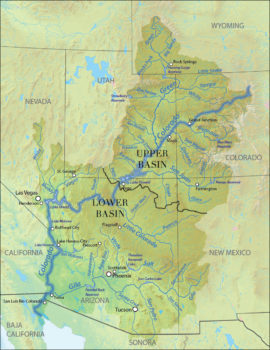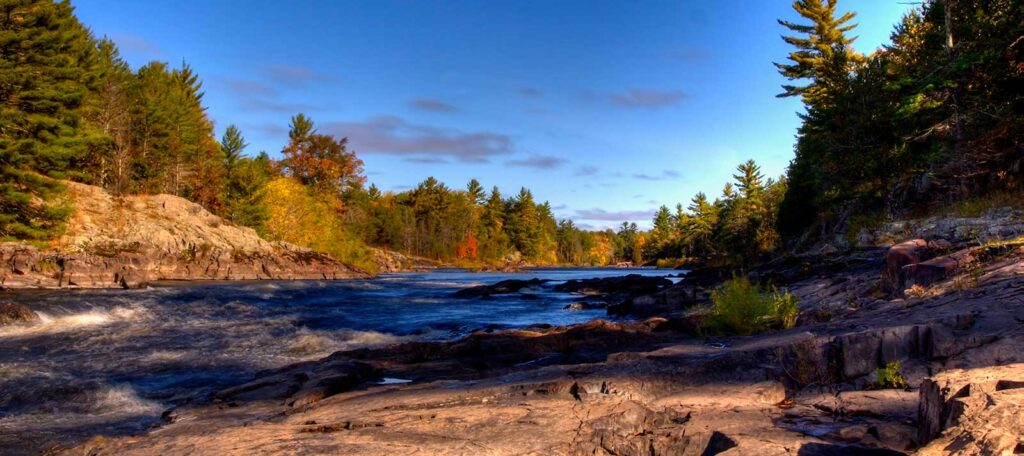An Important Step for the Colorado River
While not a silver bullet, efforts to pass the DCPs in both the Upper and Lower Basins is truly something to celebrate as we work towards better management of the Colorado River well into the future.
Collaborative processes and negotiations are often easier said than done. For almost one hundred years the Colorado River has been managed by the “Law of the River.” Starting with the 1922 Colorado River Compact, the Law of the River is a series of negotiations, compacts and a few lawsuits guiding the allocation of water to states across the Basin. I would bet, that if you asked the many participants in the negotiations making up the Law of the River, they would tell you that they were not easy given the high stakes and the wide variety of interests at play.
Components of the Law of the River have traditionally been negotiated by a few main players, including individual state governments, federal governments (the US and Mexico) and water providers (including irrigation districts and water utilities). However, in the last 25 years or so, voices at the table have shifted to include other water users, including Tribes and nonprofit stakeholders. These stakeholders provide critical viewpoints to fully evaluate how water should be allocated and managed across the basin, particularly in times of drought and shortage. The work to engage these stakeholders, particularly Colorado River Basin Tribes, must continue to evolve to ensure all water right holders are considered during critical negotiations.

Map of the Colorado River
In mid-March, a critical negotiation milestone was reached on the long-awaited Drought Contingency Plans (DCP). As a reminder, the DCPs are two separate, yet coordinated plans for the Upper and Lower Basins that work collectively to better manage the shifting Colorado River System. The plans are complex but were developed to prevent an immediate water crisis by incentivizing water conservation while preserving existing uses and rights, agriculture and the environment.
Similar to other negotiations in the Basin, finalizing the DCPs was no easy feat. For those of us living in and depending on the Colorado River Basin, we understand the effects that aridification and drought has had on the river and the many uses it supports. The sheer value of the economy supported by the river is estimated to be about $1.4 trillion, and water from Colorado River water is essential to the region’s widely diverse way of life.
In Colorado (and the other Upper Basin states of New Mexico, Utah and Wyoming), demand management is a critical component of the Upper Basin DCP. Demand management is a voluntary program that compensates farmers, cities and other water users to reduce use without losing their water rights. Once a part of the demand management program, the water is left in the river to flow downstream to Lake Powell where it is “banked” to reduce water supply risk to the Upper Basin if drought persists. On its journey down to Lake Powell, the saved water provides substantial environmental and recreational benefits for the river. Our new explainer video does a great job of illustrating why demand management is important for the river and the Basin as a whole.
Demand management is just one of many solutions identified in the DCPs to reduce demand on the river. Identifying and implementing these solutions allows water users to share the impacts of potential shortage and be prepared to address them when they occur. The cooperative efforts surrounding DCP negotiations allowed the seven states to reach a critical juncture on March 19th when representatives from the seven Colorado River Basin states gathered in Phoenix to sign a joint letter to Congress, encouraging lawmakers to address the crisis in the Colorado River Basin. The states urge Members of Congress to pass federal legislation to implement the DCP. According to the agreement with the Bureau of Reclamation, Congress must act by April 22nd.
Collaborative negotiations are not easy but lead to everyone toward being able to commit to doing the hard work to develop and prove solutions that can work across multiple stakeholders, and ultimately for the health of the river as well. Taking the time to sort out the challenges and opportunities rather than simply projecting simplistic, one-sided solutions, allows everyone to participate and frame the necessary solutions. While not a silver bullet, efforts to pass the DCPs in both the Upper and Lower Basins is truly something to celebrate as we work towards better management of the Colorado River well into the future.



